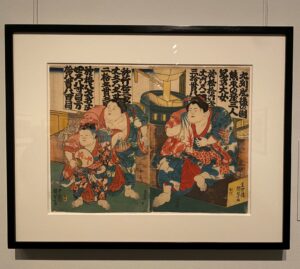In “Angels in America”, characters Harper and Prior represent the loneliness many find themselves experiencing. Loneliness is an emotion particularly associated with queerness, especially during the era of the AIDS epidemic, when queer people were no less than abandoned. Even aside from that, being systemically separated from the norm creates distance between them and their peers that is difficult to pierce. Harper, a woman married to a man, nonetheless is in close association to queerness as she finds her husband Joe to be a gay man. Queer experiences can be expressed through outlets other than gay characters themselves.
One of the earliest things the reader learns of Harper is that she is addicted to valium. This is a means of escaping her reality, as she creates a friend, Mr. Lies, in her head to keep her company. She experiences such intense isolation that she turns to the imaginary, a theme throughout the play. She believes herself to be in Antarctica, telling Joe, “I can have anything I want here – maybe even companionship, someone who has… desire for me” (3.3.14). She exits the reality of everyone around her because to be surrounded by such loneliness, of others and hers, is ironically too much to handle. Harper being a straight woman represents that societal issues, that people such as Reagan like to fence up in a single community to be ignorable, cannot but escape those walls. Her intense loneliness illustrates that AIDS is an issue that society must deal with, because if empathy isn’t enough of a reason, it affects more people than imaginable.
Prior’s experiences, though vastly different from Harpers, mirror hers in his loneliness. His nurse suggests he see a therapist, for “loneliness is a danger” (3.8.116). Drawn to medicine and fever induced visions and abandoned by his society to die uncared for, he finds himself also barely able to deal. However, he embraces his ability to stand alone. He slips up and introducing himself, says, “I am… abandoned” (3.7.2.). He draws strength from his isolation. “Angels in America” represents the ways loneliness, especially among queer people, can create different experiences.
 The legend of Auntie Po makes me directly think about this Japanese painting named “Girl power” that I saw in the National Museum of Asian Art, and I am surprised to find how many similarities they share.
The legend of Auntie Po makes me directly think about this Japanese painting named “Girl power” that I saw in the National Museum of Asian Art, and I am surprised to find how many similarities they share.